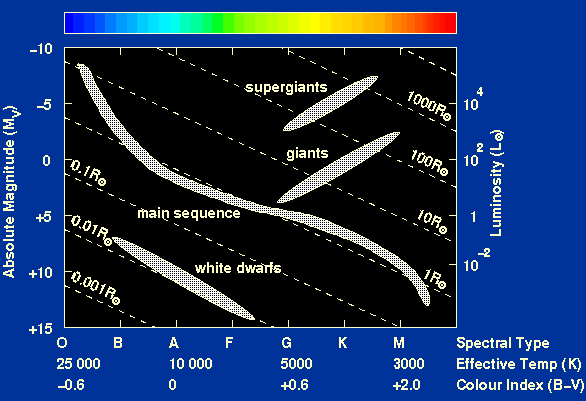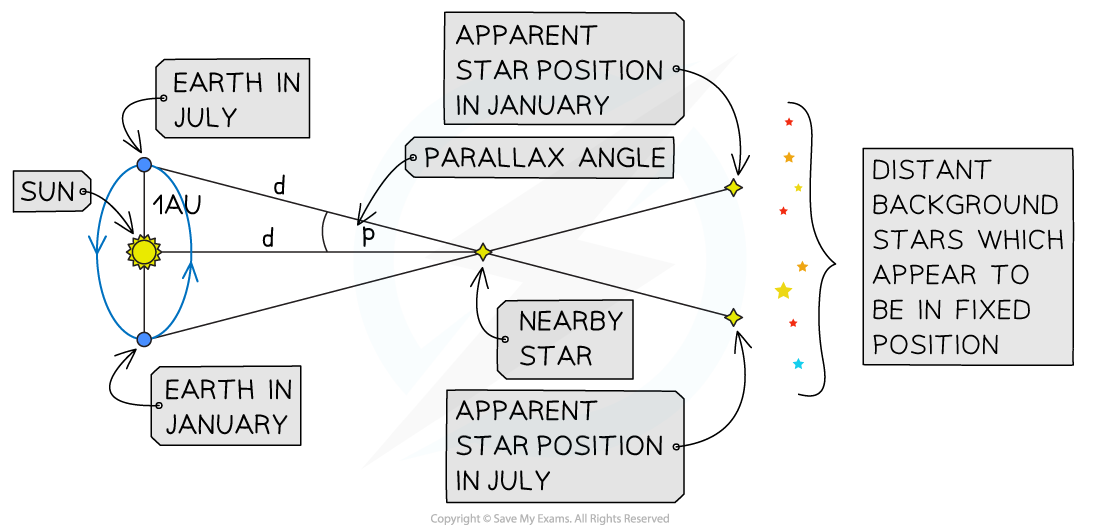E5 Fusion & Stars
1/15
Earn XP
Description and Tags
Fusion & Stars
Name | Mastery | Learn | Test | Matching | Spaced |
|---|
No study sessions yet.
16 Terms
E5.1 Nuclear fusion
Joining of 2 small nuclei to produce a larger nucleus.
Eg. 21H (deut.)+ 31H (trit.) → 42He + 10n + ENERGY
HUGE amounts of energy released in reaction. This energy e.g. provides radiation pressure (prevent star from collapsing under gravity) → provide fuel for star to continue burning.
He mass < total nucleon mass
E5.2 Strong nuclear force
For 2 nuclei to fuse, both nuclei must have high Ek, to overcome repulsive electric forces (protons), and because strong nuclear binding nucleons has very short range→ need nuclei to get very close tg. for Fnuclear to be activeactive → extremely hot/dense env needed to achieve fusion. Binding energy per nucleon increases.
E5.3 Energy released in fusion
mass defect between parent nuclei vs daughter: energy released.
31H + 21H → 42He + 10n + 2γ
E5.4 Star Formation
Need high Ek : high T, high pressure and density.
4 Hydrogen nuclei (protons) → 1 He nucleus + 2γ + 2v + 2β+
Momentum of γ outward = radiation pressure = outward.
E5.5 Equilibrium in stars
Stable when in- out-ward forces in eq. in gravity vs out gas
T increases: out pressure increases; volume decreases: gravity (p>Fg: expand)
gas + rad pressure = opposite and equal to balance F=mg
T up: expand. when pressure>Fg
E5.6 Life cycle of star
Predictable;
4 Initial stages: after this either low core mass, or high mass
Nebula: giant cloud of H-gas + dust: grav attraction; denser clumps: grav collapse
Protostar: collapse cause H to heat and glow. T up. Detected as infrared radiation
Fusion of H → He begins → grav field attract more gas/dust → increase T and pressure of core.
Main star sequence: stable state, Fout = Fin . As T up, V down, gas pressure up.
Low mass stars:m<4mS→red giant→plan neb→white dwarf:
red giant: H supply runs out. Star shrinks→hotter core →He→Be
plan. nebu: He core run out→ not hot enough→outer layers release
E5.7 Life cycle of low mass stars
E5.8 Life cycle of massive star
m>4mS→red supergiant→supernova→neutron star/black hole
Red supergiant: same red giant: H runs out,make element→Fe
Supernova: iron core collapses: outer shell is blown into explosiv
Neutron star/black hole; collapsed core either in tact or collapse
E5.9 Hertzsprung russel diagram (HR)
Size (up) vs surf Temperature (decreasing!!) vs Luminosity (up)
All relative to sun. Stars are clustered in distict areas.
Most in main sequence, for most of them, luminosity inc w. surf T
Red giants+supergiants, white and black dwarfs.
Go up from right bottom to mid top, then down to left bottom.

E5.10 Continuous spectrum of star
photons emitted from core containing all f and λ of EM spectrum. Hot dense sources, core of star.
E5.11 Emission spectration
When electron transitions from high E-level to lower; emit photon. each transition corresponds to diff λ of light: line on spec
Discrete λ represented by coloured line on black background. Low pressure, hot gases.
E5.12 Absorption spectra
absorption of a photonl cool, low pressure gases. see rainbow-black lines.
E5.13 Chemical composition of stars and their colour emitted
Hotter: white or blue
Cooler: red or yellow
Give absorption line spectrum to identify (core=contin.)
E5.14 Stellar paralax
AU = astronomical units: mean dist. centre earth-sun: 1.5×1011m
Light years: ly ; dist trav light 1 year = 9.5×1015 m
Parsecs: pc ; 1/parallax angle in sec. d=1/p ,1pc=3.26ly = 3.1×1016m
E5.15 Parallax calculations
How position of an object appears to change depending on where observed from: seen in like mountains, when moving diff angles form objects.
Stellar parallax: used to measure distances nearby stars; apparent shifting in position of nearby star against background distant star when viewed from diff position of earth in sun orbit.
Paralax angle, when with time interval 6 months: orbit diameter, diff apparent position of star, use p = 1/d.
arcsec vs arcminute: 60arcsec = 1 arcmin

E5.16 Stellar radius
L = 4πr2σT4 = AσT4 easyyyy